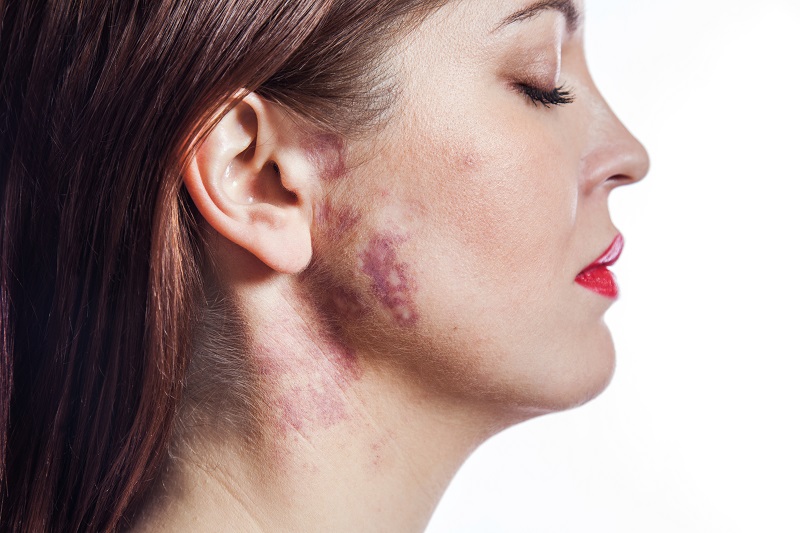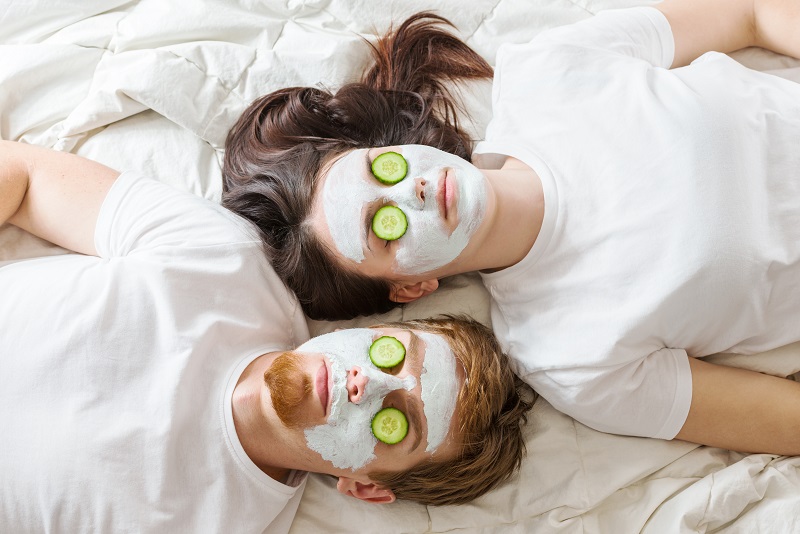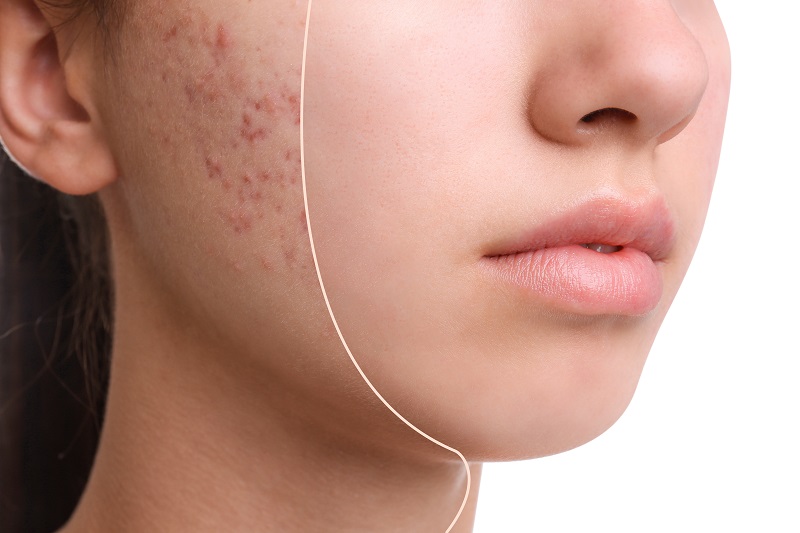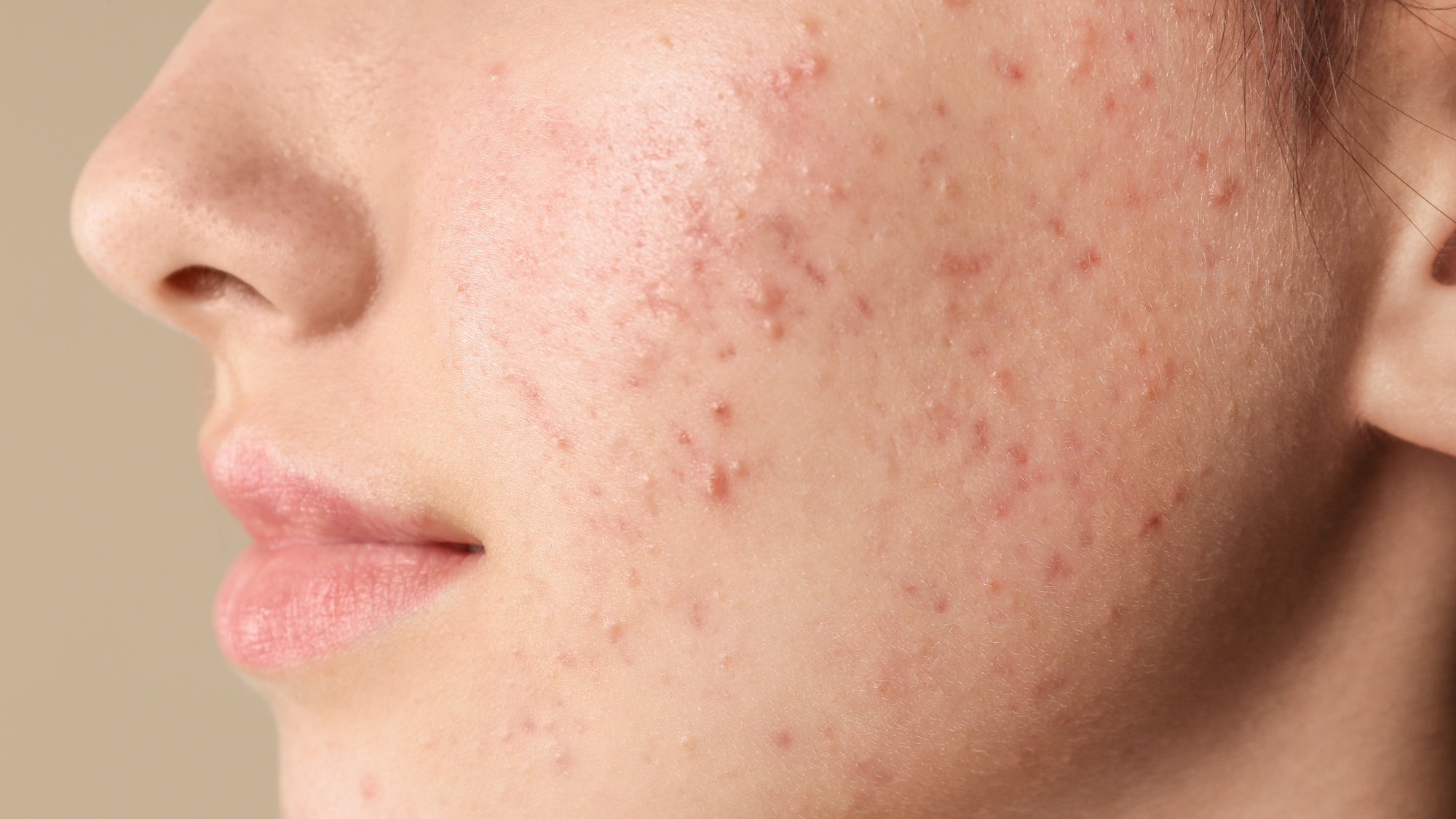A blemish is a form of skin imperfection that appears as a mark, spot, discolouration, patch, or other types of superficial flaw on the skin that are usually caused by irritation.
Skin blemishes are a typical skin problem for many women. Some marks are barely noticeable or cause concern, while some detract from your appearance and make you feel self-conscious. Although most blemishes are harmless and pose no health risk, some can indicate skin cancer.
Blemishes are the main reason our skin lacks the clear, flawless, and airbrushed appearance we all secretly desire.

Type and Causes of Blemishes
1. Acne
Our skin contains many pores, each of which is linked to an oil-producing gland. Excess sebum is produced when the oil glands become hyperactive.
When excess sebum, germs, dead skin, and dirt clog your skin’s pores, it can cause pimples, blackheads, and whiteheads. Acne can sometimes cause dark spots, pockmarks, or scarring on the skin, resulting in the appearance of blemishes.
Acne is mainly caused by hormonal changes, especially during puberty, improper diets, as well as stress. All of these can trigger an increase in oil production and worsen the acne.
2. Papules
Papules are tiny skin blemishes that can occur alone or in groups which can be any shape. They are approximately 1 cm in diameter and range in color from pink to brown. Papules also include following:
- Pimple
- Chickenpox rashes
- Eczema (a condition that impairs your skin to become red and itchy)
- Dermatitis (common skin irritation that involves Itchy skin, dry skin, rashes, blistering, or flaking skin)
- Shingles (painful rashes that caused by viruses)
- Psoriasis (a skin condition characterized by itchy and scaly patches)
Bacteria and infections that trigger skin irritation are the most common causes of Papules.
3. Birthmarks
Birthmarks are patches on skins that vary in appearance, size, shape, and color. They normally appear at or shortly after birth and can remain a lifetime or disappear over time. Birthmarks are classified into two types:
- Pigmented birthmarks are generated by an excess of melanin-producing cells in one specific area of the skin. These birthmarks are usually black or brown in colour.
- Vascular birthmarks appear when there is an abnormal growth or abnormality of blood vessels beneath the skin. These birthmarks could be purple, pink, or red in colour.

4. Ingrown hair
Ingrown hair is hair that curls back and grows inside the skin. It is frequently caused by irritating hair removal processes such as tweezing, waxing, or shaving. People with curly hair are more likely to get ingrown hair than individuals with straight hair.
Ingrown hairs can form red bumps on the skin where the hair should have grown. These lumps can potentially develop into huge, painful, fluid-filled cysts of red, yellow, or white color.
5. Hyperpigmentation
Hyperpigmentation is the overproduction of melanin, which can cause uneven skin tone or dark spots. Hyperpigmentation examples include:
- Age Spots – small, dark spots can occur on any portion of the body that has been exposed to sunlight and are most common in adults over the age of 50.
- Melasma – dark spots that might appear as a result of sun exposure and hormonal changes prevalent in pregnant women.
Sun exposure, acne scars, and hormonal changes such as during pregnancy and aging are common causes of hyperpigmentation.
6. Skin Cancer
Consult any dermatologist if you notice any unusual, black moles, unusual yellow zits, or bizarre red bumps. It could be completely harmless.
But it’s best to avoid that risk and let the doctor determine whether a blemish is skin cancer. This is due to the fact that most skin cancers differ in shape and colour. Some examples of skin cancers are:
- Basal Cell Carcinoma – Skin cancer that most commonly occurs on sun-exposed parts of skin, such as the face.
- Squamous Cell Carcinoma – Common skin cancer caused by overexposure to UV radiation.
- Malignant Melanoma – Skin cancer arising from pigment-producing cells.
Tips to Prevent and Reduce Blemishes
There are numerous methods to prevent and reduce blemishes from our skin. For a start, you can try these four tips:
#Tips 1
Avoid consuming too many dairy products because they not only raise inflammation in your body but also produce a lot of hormonal imbalance.
#Tips 2
Walk at least 10,000 steps at home or anywhere, or engage in 30 minutes of exercise every day. This prevents hormonal imbalance, removes toxins from your system, and keeps you physically well.
#Tips 3
Yoga and meditation can help you cope with anxiety and stress.
#Tips 4
To prevent clogged pores, follow a strict skincare routine that begins with cleaning your face, preferably using salicylic acid facial products. Then, apply an antibacterial cream to heal your skin, and finally, remember to apply sunscreen to protect yourself from UV radiation.
Treatments to Reduce Blemishes

Blemishes on the skin are entirely natural. However, if you want to reduce the blemishes on your skin, there are two methods that you can try:
i. Home Remedies
Please note that these suggestions are not applicable to birthmarks and skin cancer as these are in the list of skin blemishes.
a) Honey: Apply 2 tablespoons of honey to your face and wash it after 10 minutes. Scars can be removed using honey.
b) Cucumber: Apply a cotton ball soaked in fresh cucumber juice to your skin. After 20 minutes, rinse the affected area with cold water. Cucumber is high in antioxidants and vitamin C, which aid to promote skin health.
c) Tomatoes: Massage tomato pulp into your face for 15 minutes and leave it on. Rinse well with cool water. Tomatoes have astringent qualities that help in the shrinking of big pores and the treatment of acne.
d) Steaming: Fill a bowl halfway with hot water and steam your face for 5 to 10 minutes. The warmth of the steam draws dirt, toxins, bacteria, dead skin cells, and sebum within the pores to the skin’s surface, preventing blemishes from developing.
e) Exfoliation: Exfoliate your face with chemical-free products. Twice a week. Dead epithelial cells tend to accumulate in your pores and block them, resulting in blackheads, whiteheads, and more severe acne. Exfoliation keeps your skin pores clean while increasing blood flow in your face.
f) Aloe Vera Gel: Use aloe vera-based lotions or massage fresh aloe vera gel over your face. Aloe Vera moisturises the skin and protects it from UV damage caused by the sun.
ii. Professional Medical Treatment
In Singapore, there are multiple treatments available to eradicate skin blemishes. To eradicate blemishes, dermatologists utilize the same technique as pigmentation experts. Among the treatments available are:
a) Facial treatments that are typically adjusted to the severity of the pigmentation and skin blemishes problem while taking the individual’s skin type into consideration. This form of treatment may cost $50 to $300 per session, depending on the pigmented skin problem.
b) Laser resurfacing and light therapies that use targeted light beams to eliminate blemishes in our skin. Depending on the treatment area, the treatment, which generally costs $150 per session, can be finished in as little as 15 minutes.
c) Chemical peels work by exfoliating the top layer of skin as well as the dark areas with glycolic acid and salicylic acid, which speeds up the skin lightening process. This form of therapy can range in price from $128 to $238 each session.

It is necessary to keep in mind that all of the above treatments are always conducted by a licensed dermatologist. After the treatment, most have the same effect of causing redness in the treated skin area. Do not be scared! The redness of the skin is a normal part of the recovery process and will fade in a few days.

Add a Comment